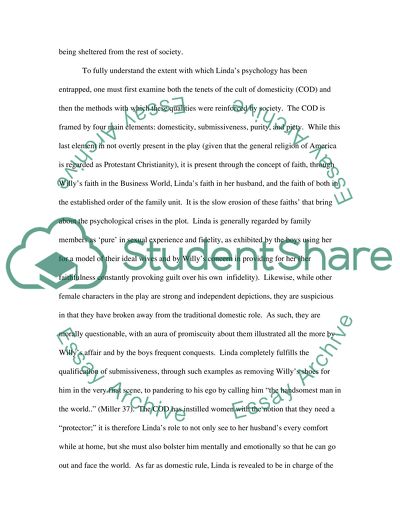Cite this document
(“Linda Loman and the Cult of Domesticity In Arthur Millers Death of a Essay”, n.d.)
Retrieved de https://studentshare.org/miscellaneous/1530433-linda-loman-and-the-cult-of-domesticity-in-arthur-millers-death-of-a-salesman
Retrieved de https://studentshare.org/miscellaneous/1530433-linda-loman-and-the-cult-of-domesticity-in-arthur-millers-death-of-a-salesman
(Linda Loman and the Cult of Domesticity In Arthur Millers Death of a Essay)
https://studentshare.org/miscellaneous/1530433-linda-loman-and-the-cult-of-domesticity-in-arthur-millers-death-of-a-salesman.
https://studentshare.org/miscellaneous/1530433-linda-loman-and-the-cult-of-domesticity-in-arthur-millers-death-of-a-salesman.
“Linda Loman and the Cult of Domesticity In Arthur Millers Death of a Essay”, n.d. https://studentshare.org/miscellaneous/1530433-linda-loman-and-the-cult-of-domesticity-in-arthur-millers-death-of-a-salesman.


